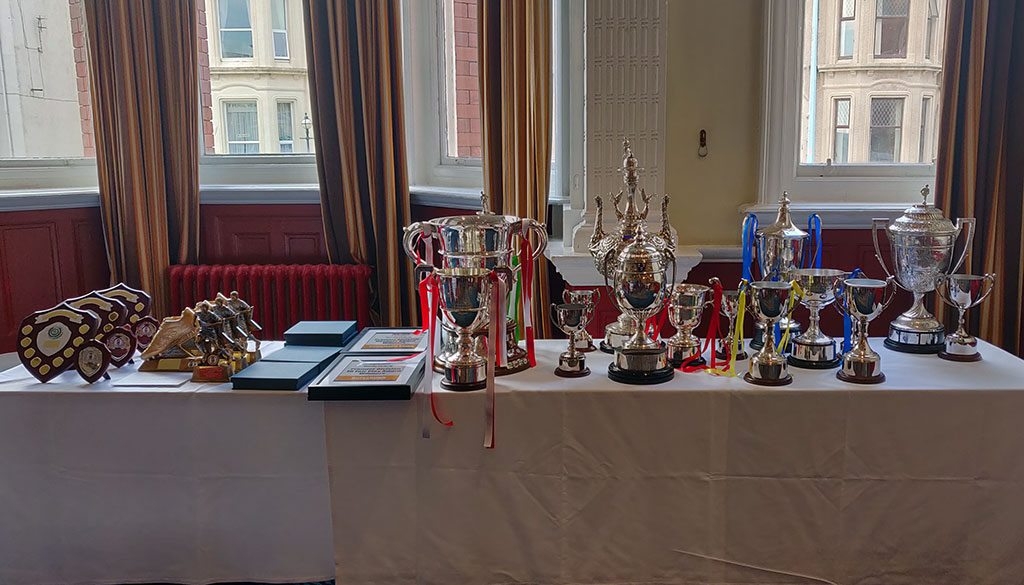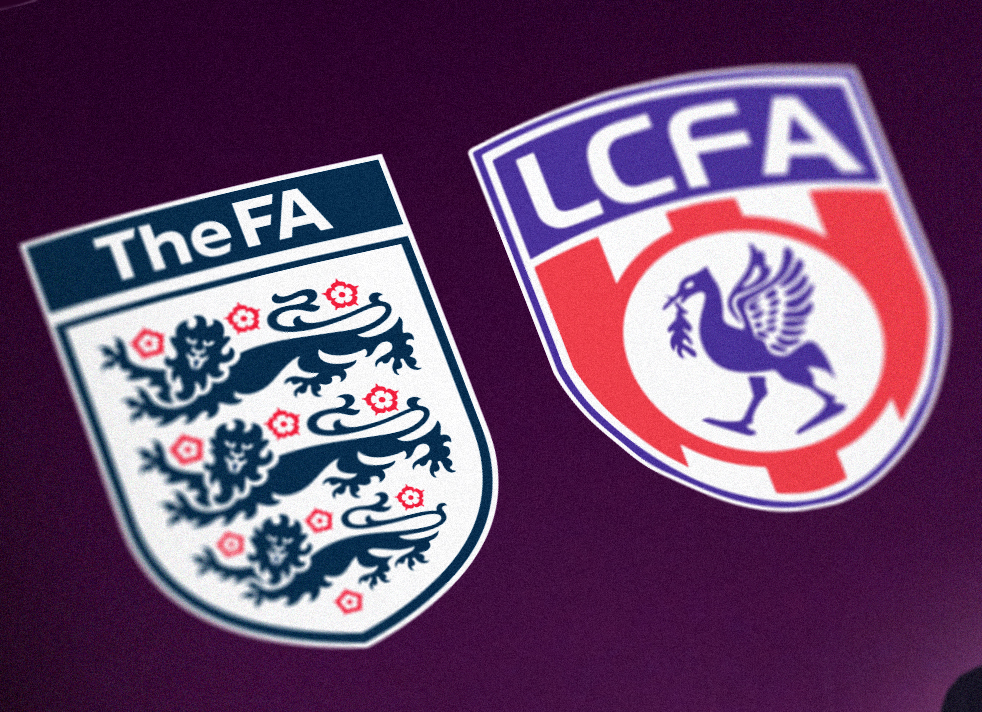
NWCFL Trophies - An Introduction to their History
Wed 14th August 2019 | County Cup Competitions | By Craig Kendall
The current North West Counties Football League member clubs cover a wide range of football history. We have many historic clubs which can trace their roots back to the Victorian era and a number of others of much more recent vintage, writes Stewart Taylor.
If we look at the organisational and governance side of the game we see a not dissimilar pattern with some Leagues going back well over 100 years whilst others are of more recent vintage. Of the more recently established Leagues, the North West Counties is an example of a League which came together as a result of amalgamation. Many of our followers will be well aware that the NWCFL was formed in 1982 from the Lancashire Combination and the Cheshire County League.
With the formation of the League came the presentation to the newly formed League of several trophies which were originally competed for by members of the forerunner Leagues. Some of the articles which follow in this series will take a detailed look at the history of these trophies and there are some fascinating stories, and a couple of mysteries, to tell here.
Equally, on the organisational side, we see County Football Associations which represent the Football Association (FA) at local level. Most, if not all, of the County FAs, was established a very long time ago and are able to chart their history back to the very beginnings of organised football in England. It was and still is, traditional for County FAs to run their own Cup competitions during each season. Within any individual County FA, there are typically a number of County FA trophies which are competed for by different groups of teams operating at specific levels of the football pyramid. Many of these trophies also have a splendid history and we will take a look at those trophies which are competed for by member clubs of the NWCFL.

And then we move on to National level trophies which our clubs hold in great respect being the opportunity for clubs to present themselves on the National scale, those being the FA Cup and the FA Vase. Again, there are trophies awarded for these national competitions and, hence, stories to be told.
Throughout this series of articles, we will come across the name of Fattorini as the manufacturer of a specific trophy. To avoid repetition in the articles to follow we can have a look here at the history of this family and their significance to trophy making.
The story begins in 1827 when Antonio Fattorini (pictured below), an Italian speaking Swiss national, emigrated to England and settled in Yorkshire. Antonio originally set up a jewellery business in Leeds but then moved to Bradford and established the company of Fattorini and Sons. His sons went on to establish their own businesses in Skipton and Harrogate. At the beginning of the 20th century, factories were established in Birmingham and what had by then become two companies were joined together under the name of Thomas Fattorini. The current Managing Director, Greg, represents the sixth generation of the family to run the company.

One of the specialities of the company towards the end of the 19th century relates to sport and the supply of medals and trophies to teams competing in organised sport. One of these was, of course, football.
On the trophy side, the company was responsible for manufacturing some of the most iconic trophies in sport. Included amongst these we can find the original Rugby League Challenge Cup trophy made in 1897. This magnificent trophy is no longer in use on an annual basis but is in storage at the headquarters of the Rugby Football League.
Closer to home, so to speak, we can cite a replacement FA Cup trophy as another glorious example of the work of the Fattorinis. There is an article later in this series which looks in detail at the story of the FA Cup trophy.
The work of the company continues to this day and a number of trophies for Premier Division awards are supplied from the factory in Birmingham.
In the weeks which follow we will explore the history of each of the competitions indicated in the categories above and we trust that you will find the articles of interest from both a historical and modern-day perspective.

 NWCFL Trophies - An Introduction to their History
NWCFL Trophies - An Introduction to their History
Wed 14th August 2019 | County Cup Competitions
By Craig Kendall
The current North West Counties Football League member clubs cover a wide range of football history. We have many historic clubs which can trace their roots back to the Victorian era and a number of others of much more recent vintage, writes Stewart Taylor.
If we look at the organisational and governance side of the game we see a not dissimilar pattern with some Leagues going back well over 100 years whilst others are of more recent vintage. Of the more recently established Leagues, the North West Counties is an example of a League which came together as a result of amalgamation. Many of our followers will be well aware that the NWCFL was formed in 1982 from the Lancashire Combination and the Cheshire County League.
With the formation of the League came the presentation to the newly formed League of several trophies which were originally competed for by members of the forerunner Leagues. Some of the articles which follow in this series will take a detailed look at the history of these trophies and there are some fascinating stories, and a couple of mysteries, to tell here.
Equally, on the organisational side, we see County Football Associations which represent the Football Association (FA) at local level. Most, if not all, of the County FAs, was established a very long time ago and are able to chart their history back to the very beginnings of organised football in England. It was and still is, traditional for County FAs to run their own Cup competitions during each season. Within any individual County FA, there are typically a number of County FA trophies which are competed for by different groups of teams operating at specific levels of the football pyramid. Many of these trophies also have a splendid history and we will take a look at those trophies which are competed for by member clubs of the NWCFL.

And then we move on to National level trophies which our clubs hold in great respect being the opportunity for clubs to present themselves on the National scale, those being the FA Cup and the FA Vase. Again, there are trophies awarded for these national competitions and, hence, stories to be told.
Throughout this series of articles, we will come across the name of Fattorini as the manufacturer of a specific trophy. To avoid repetition in the articles to follow we can have a look here at the history of this family and their significance to trophy making.
The story begins in 1827 when Antonio Fattorini (pictured below), an Italian speaking Swiss national, emigrated to England and settled in Yorkshire. Antonio originally set up a jewellery business in Leeds but then moved to Bradford and established the company of Fattorini and Sons. His sons went on to establish their own businesses in Skipton and Harrogate. At the beginning of the 20th century, factories were established in Birmingham and what had by then become two companies were joined together under the name of Thomas Fattorini. The current Managing Director, Greg, represents the sixth generation of the family to run the company.

One of the specialities of the company towards the end of the 19th century relates to sport and the supply of medals and trophies to teams competing in organised sport. One of these was, of course, football.
On the trophy side, the company was responsible for manufacturing some of the most iconic trophies in sport. Included amongst these we can find the original Rugby League Challenge Cup trophy made in 1897. This magnificent trophy is no longer in use on an annual basis but is in storage at the headquarters of the Rugby Football League.
Closer to home, so to speak, we can cite a replacement FA Cup trophy as another glorious example of the work of the Fattorinis. There is an article later in this series which looks in detail at the story of the FA Cup trophy.
The work of the company continues to this day and a number of trophies for Premier Division awards are supplied from the factory in Birmingham.
In the weeks which follow we will explore the history of each of the competitions indicated in the categories above and we trust that you will find the articles of interest from both a historical and modern-day perspective.




